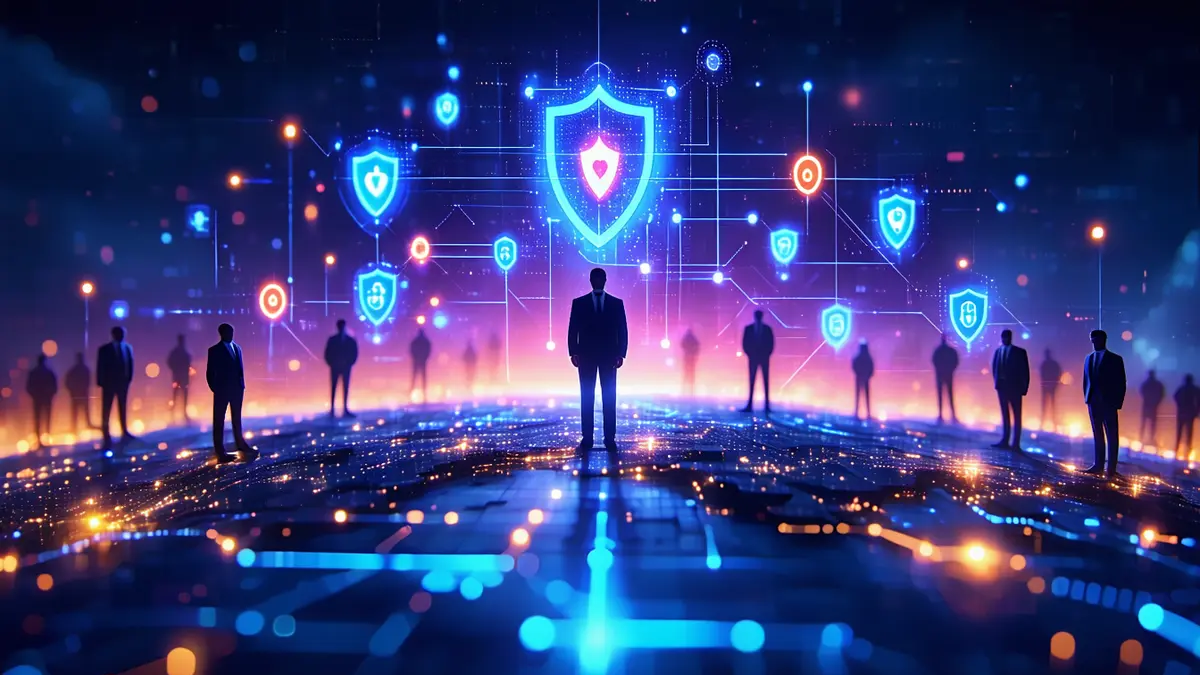In 2025, cyber threats have become more sophisticated, fast-moving, and adaptive than ever. Traditional defenses—firewalls, signature-based antivirus, and manual threat analysis—are no match for AI-driven attackers who leverage machine learning to craft hyper-targeted phishing emails, exploit zero-day vulnerabilities, and automate large-scale breaches. The solution? A new wave of AI-powered cybersecurity tools, powered by deep learning and predictive analytics, is transforming how individuals and businesses safeguard their digital ecosystems.
This article explores how machine learning (ML) is transforming cybersecurity, from proactive threat detection to real-time response and predictive analytics.
Why Traditional Cybersecurity Is Failing in 2025
Before diving into AI’s role, it’s essential to understand the shortcomings of conventional approaches:
- Signature-based detection only identifies known threats.
- Manual security operations can’t scale with modern attack volume.
- Human analysts are overwhelmed by false positives and alert fatigue.
- Zero-day threats and polymorphic malware bypass legacy systems.
These limitations leave even the most prepared organizations vulnerable. Enter artificial intelligence (AI) and machine learning (ML)—the game-changers in cybersecurity.
How AI and Machine Learning Fight Back
1. Real-Time Threat Detection with Behavioral Analysis
Unlike static rules, machine learning algorithms analyze behavior. For example, if a user’s login pattern suddenly changes—such as accessing files at 3 a.m. from a foreign IP—the AI-powered system flags it instantly. AI-driven cybersecurity doesn’t just detect anomalies; it learns what’s normal over time.
Popular Example:
Darktrace uses AI and ML to create a “digital immune system,” detecting anomalies without predefined rules.
“It caught a breach within seconds—something our old system missed completely.” – UK-based CTO, manufacturing sector.
2. Predictive Analytics to Preempt Attacks
AI doesn’t just react—it predicts. By analyzing patterns across terabytes of historical data, machine learning models forecast where vulnerabilities might be exploited next.
Use Case:
Banks and fintech firms use AI risk modeling to flag accounts likely to be targeted by phishing or credential stuffing before attacks occur.
3. Automated Threat Hunting & Response
Machine learning-powered systems correlate signals from hundreds of logs, endpoints, and traffic sources to hunt threats that human teams might miss. Some AI-driven platforms even initiate
Top Tools of 2025:
| Tool | Strengths | User Ratings (US/UK) |
| CrowdStrike Falcon XDR | AI-based detection, rapid threat response | 4.7 / 5 |
| SentinelOne Singularity | Autonomous remediation, excellent visibility | 4.6 / 5 |
| Microsoft Defender for Endpoint | Deep integration, ML-driven alerts | 4.5 / 5 |
4. Phishing Detection with Natural Language Processing (NLP)
AI models trained on billions of emails can now analyze context, tone, and structure to detect even well-crafted phishing attempts. Whether it’s a CEO impersonation email or a fake login prompt, AI is closing the gap.
Example:
Gmail’s Smart Protection now blocks 99.9% of phishing emails using deep learning models trained on contextual cues and metadata.
5. Deepfake and Synthetic Media Detection
As deepfake scams become more common—CEO voice impersonations, fake Zoom calls—AI is also being used to fight back. Specialized models now detect visual and auditory anomalies in deepfakes.
UK/US Cybersecurity Agencies have begun mandating the use of AI-based verification tools for sensitive remote communications.
Limitations of AI in Cybersecurity
While AI brings huge benefits, it’s not a silver bullet. Key concerns include:
- Bias in training data can lead to missed threats or false positives.
- Adversarial AI attacks aim to trick ML models by subtly manipulating inputs.
- High implementation costs and complex integrations can be barriers for smaller firms.
Security leaders must view AI as a tool in a broader defense strategy, not a complete replacement.
The Rise of Offensive AI: Cybercrime Gets Smarter Too
Unfortunately, criminals are also embracing AI:
- AI-generated phishing is now more convincing, grammatically correct, and tailored.
- Automated vulnerability scanning tools can probe thousands of networks per minute.
- Deepfake extortion schemes are on the rise—creating realistic fake videos to blackmail victims.
The cybersecurity battlefield is now AI vs. AI, and the stakes have never been higher.
Key Trends for 2025 and Beyond
- AI-powered SOCs (Security Operations Centers): Increasingly common in large enterprises.
- AI Integration with SIEM tools: Platforms like Splunk and LogRhythm are embedding ML for smarter threat correlation.
- Cybersecurity Mesh Architecture (CSMA): AI enables decentralized, real-time security across distributed assets.
- Explainable AI (XAI): Growing demand for transparency in how AI models make security decisions.
Expert Insights
“We’ve moved from a reactive posture to a predictive one, thanks to AI. It’s not about replacing analysts—it’s about giving them superpowers.”
– Lisa Morgan, CISO, London Fintech Group
“Attackers use AI to craft precision-targeted malware. If you’re not using AI to defend, you’re already behind.”
– David Chen, Lead AI Researcher, Boston Cyber Defense Lab
Final Thoughts: Navigating the New Frontier of Cyber Defense
Artificial intelligence isn’t just transforming cybersecurity—it’s redefining it. In 2025, defending against cybercrime is no longer about building higher digital walls; it’s about deploying smarter, adaptive systems that learn, anticipate, and act faster than the attackers themselves.
But as organizations embrace AI-driven defenses, it’s crucial to remember: technology alone isn’t enough. Effective cybersecurity still hinges on a strong strategy, skilled professionals, and a culture of awareness.
To stay secure in this new era:
- Use AI as a force multiplier, not a replacement for human expertise.
- Continuously train your models and your teams, because attackers evolve too.
- Stay vigilant against offensive AI tools, which are only growing in power and accessibility.
- Invest in explainable and ethical AI, ensuring your security posture is not just powerful—but also accountable.
The battle between AI and cybercrime is just beginning. Whether you’re a small business or a global enterprise, your ability to integrate AI intelligently and responsibly will define your resilience in the years ahead.
The future of cybersecurity isn’t man vs. machine. It’s humans and machines, working together to stay one step ahead.





















